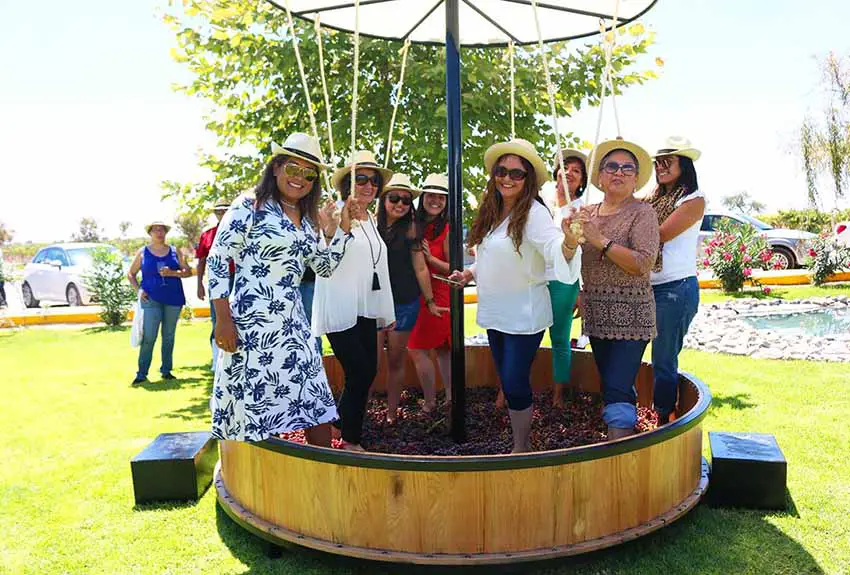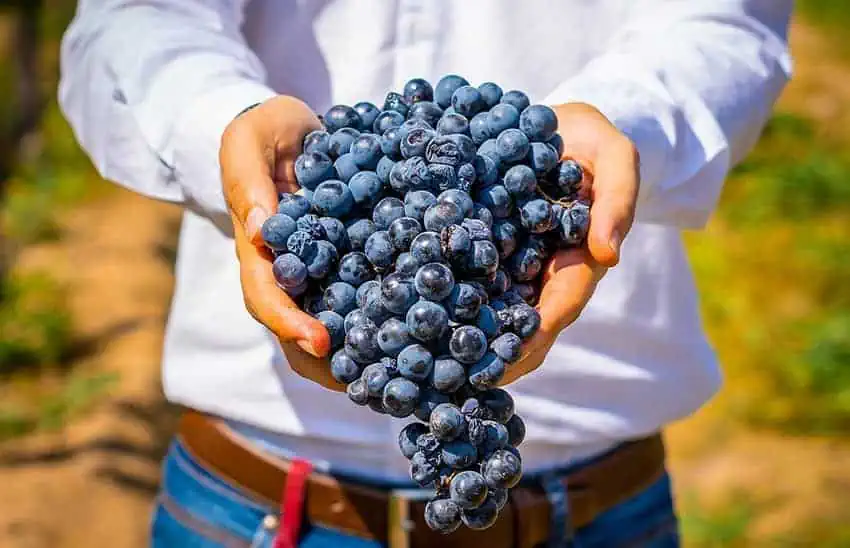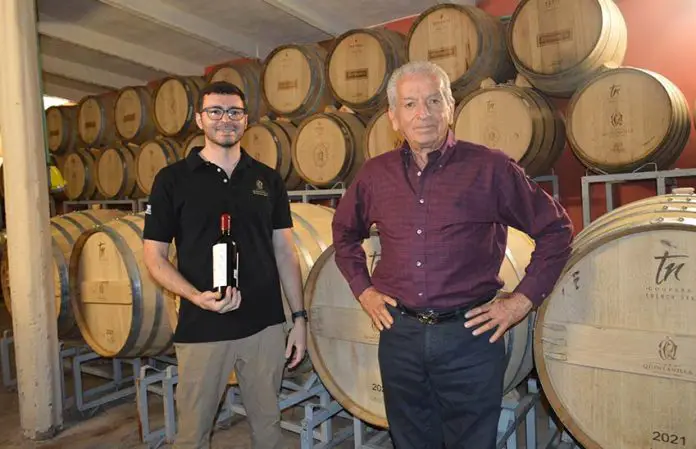A new industry almost always starts because someone was willing to pursue an idea despite being told it is impossible. For wine in the Altiplano region of San Luis Potosí, that someone is Carlos Quintanilla.
Born in the poor state of Guerrero, Quintanilla is a farmer from a farming family. In the mid-1970s, he and his family moved to San Luis to work in greenhouses producing vegetables for export.
With a lot of hard work and savings, they managed to purchase land and establish Rancho Sureño, then made it a major producer and exporter of tomatoes and bell peppers to the United States. Today, Carlos is the owner of the family business. He may be soft-spoken, but he is both hardworking and ambitious.
On a trip to France in 2010, he noticed that some wine areas there had environments very similar to that of his rancho. He wondered if he, too, could grow grapes back home in San Luis Potosí’s Moctezuma Valley, a very rural area just west of the state capital.
On what he calls “an impulsive decision,” he imported a number of French vines in 2011, planting them on 20 hectares as an experiment. He knew nothing about winemaking, but the vines did “extremely well,” he said.
Quintanilla may not have been aware of it at the time, but the Altiplano has a number of advantages for both the growing of grapes as well as the making of wine: the Altiplano is in a transition zone that links the central Mexican Bajío, the Chihuahuan Desert and the northern Sierra Madre Oriental.

This area is filled with microclimates whose qualities are determined by altitude and wind patterns that bring moisture (or not) from the Gulf of Mexico.
Rancho Sureño has the hot days and cool nights that grapes crave. The Altiplano’s volcanic and other soils also give the wines produced here unique qualities.
Quintanilla’s Argentina-born oenologist Matias Utrero is fascinated by the promise of Altiplano vineyards.
“This area has a unique balance between heat and humidity, especially compared to Baja California and the Bajío of central Mexico. This balance harmonizes the acidity and alcohol content to produce a truly superior product.”
Encouraged, Quintanilla approached state agricultural authorities to get support to develop winemaking in his impoverished part of the state. “But they could not see the potential in it,” says Quintanilla, “and would not listen to my proposals.”
This is curious because fellow San Luis vineyard Viña Cordelia began making a sweet wine called mistela in the 1950s, primarily because its founder was a refugee from the Spanish Civil War. But this wine was never significantly commercialized.

Quintanilla persevered using his own resources, hiring wine experts from Mexico and abroad to develop both vineyards and winemaking of Cava Quintanilla. The grapes and the resulting wines were doing so well that the timetable for market introduction was stepped up to 2016, and the vintages quickly garnered attention.
The different microclimates means that the Altiplano can produce classics like cabernet sauvignon, merlot and chardonnay but also produces lesser-known varieties such as gewürztraminer and cabernet franc.
Cava Quintanilla is by far the largest winery in the state, growing 14 varieties of grapes (three whites, 11 reds and a rosé) on 120 hectares, producing 150,000 bottles per year. A number of vintages have won awards in Mexico and abroad, including two chosen to compete in the 2019 Concours Mondial de Bruxelles México Selection, and two won gold medals at Global Wine 2022, ranking these wines as equals to those produced by Mexican powerhouses Casa Madero, Friexenet and various labels from Baja California.
But the Altiplano’s wine future is highly promising: in addition to its unique growing conditions, there is a growing demand for wine both in Mexico and abroad, more than what Mexico overall can produce. In Quintanilla’s wake, other successful wineries have come along and are quickly making waves too, most notably, Pozo de Luna, which has won accolades from the México Selection and other wine competitions.
SLP has logistical advantages too, since it’s located between Mexico City and the Texas border, and on roads that connect the northern interior with the important port of Tampico.
Quintanilla understands the huge potential that wine grapes have for his impoverished area of the state and hopes that the industry will help stem the tide of residents migrating northward. But he also understands the importance of diversification — the hectares of tomatoes and bell peppers are not going anywhere, he says.

Furthermore, the wine industry in Mexico runs almost as much on tourism as it does on selling product, and here is where San Luis wine may face its biggest challenge: the niche population of dedicated wine aficionadas will generally be fine with learning about an unknown wine region if the product is superior, says Utrero, but average tourists may not.
San Luis, because of its northerly location, is often mistaken as “cowboy country,” and not really conducive for wine tourism. Add to that the fact that northern Mexico overall has precious little tourism infrastructure.
However, Cava Quintanilla has had success with vendimias (grape harvest events) for over five years, with growing attendance from places like Texas, Guanajuato, Querétaro and Mexico City. For those of us who make runs to the Texas border, the winery is not far from the highways that connect central Mexico to Laredo.
Cava Quintanilla’s tourism services are still a work in progress. For now, the restaurant is operating only part-time, so you need a reservation in advance and a minimum of 10 people in your group. Lodging will be available in the future.
If you just want to buy a bottle of wine, they have a store in San Luis Potosí city on Avenida Venustiano Carranza and a store on their website.
Leigh Thelmadatter arrived in Mexico 18 years ago and fell in love with the land and the culture in particular its handcrafts and art. She is the author of Mexican Cartonería: Paper, Paste and Fiesta (Schiffer 2019). Her culture column appears regularly on Mexico News Daily.
